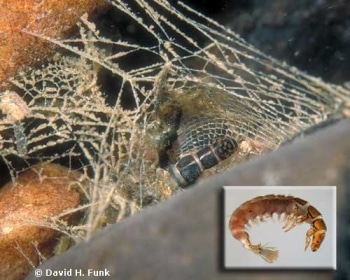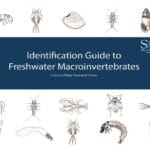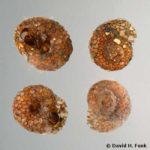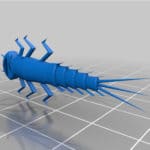 Breaking Down the Terms
Breaking Down the Terms
Benthic = inhabiting bottom areas or substrates;
Freshwater = streams, rivers, lakes, ponds;
Macro = relatively “large” (> 0.2-0.5mm);
Invertebrate = animals without vertebrae (a backbone).
Putting It All Together
Benthic freshwater macroinvertebrates are animals without backbones, that are visible with the naked eye, living on the bottoms of streams, river, lakes, and ponds.
What Kinds of Macroinvertebrates Can You Find In a Stream?
Benthic freshwater macroinvertebrates include crustaceans and worms but most are aquatic insects. Beetles, caddisflies, stoneflies, mayflies, hellgrammites, dragonflies, true flies, and some moths are among the groups of insects represented in streams.
Macroinvertebrates are an important link in the food web between the producers (like leaves and algae) and higher consumers such as fish.
Common Stream Macroinvertebrates
| Insects | Crustaceans | Annelids | Mollusks |
|---|---|---|---|
| Stoneflies Mayflies Dragonflies Damselflies Hellgrammites Beetles True flies Caddisflies |
Crayfish Scuds Aquatic sowbugs |
Aquatic worms Planaria Leeches |
Clams Mussels Snails Limpets |
Insect Life Cycles
All insects go through a series of changes (metamorphoses) during their life cycle. Insect life cycles can be grouped as either complete or incomplete metamorphoses. A complete metamorphosis includes a pupal stage. The adults and larvae tend to look very different from each other. Incomplete metamorphosis lacks the pupal stage and the nymphs and adults are more similar in appearance.
Most aquatic insects remain underwater in the immature stages and leave the stream only as adults. The length of macroinvertebrate life cycles ranges from a few weeks to several years.
Aquatic Insect Life Cycles
| Incomplete Metamorphosis | Complete Metamorphosis |
|---|---|
| (Egg → nymph → adult) Mayflies Stoneflies Dragonflies/Damselflies True bugs |
(Egg → larva → pupa → adult) Caddisflies Dobsonflies/alderflies Beetles True flies Aquatic moths |
Macroinvertebrates Resources
Visit macroinvertebrates.org for aquatic insect resources to support citizen science identification activities.
Use Stroud Water Research Center’s dichotomous key to identify macroinvertebrates you have found.
View dozens of macroinvertebrate photos in the Stroud Center’s photo gallery.
Check out 3D printable macroinvertebrate designs available as free downloads from Thingiverse.






